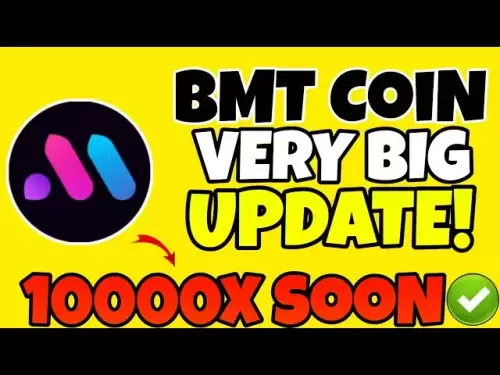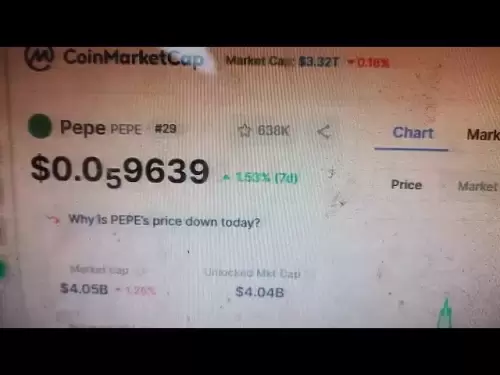-
 Bitcoin
Bitcoin $108,802.0448
0.59% -
 Ethereum
Ethereum $2,556.7655
1.66% -
 Tether USDt
Tether USDt $1.0001
-0.02% -
 XRP
XRP $2.2765
2.15% -
 BNB
BNB $662.6901
1.16% -
 Solana
Solana $151.4936
2.68% -
 USDC
USDC $0.9999
0.00% -
 TRON
TRON $0.2857
0.49% -
 Dogecoin
Dogecoin $0.1704
4.33% -
 Cardano
Cardano $0.5847
1.63% -
 Hyperliquid
Hyperliquid $39.2227
-0.47% -
 Sui
Sui $2.9110
0.60% -
 Bitcoin Cash
Bitcoin Cash $491.8681
1.55% -
 Chainlink
Chainlink $13.4311
2.12% -
 UNUS SED LEO
UNUS SED LEO $9.0273
0.09% -
 Avalanche
Avalanche $18.1653
1.64% -
 Stellar
Stellar $0.2442
2.69% -
 Toncoin
Toncoin $2.8966
5.36% -
 Shiba Inu
Shiba Inu $0.0...01180
2.95% -
 Litecoin
Litecoin $87.8955
1.49% -
 Hedera
Hedera $0.1573
1.30% -
 Monero
Monero $316.6881
0.88% -
 Polkadot
Polkadot $3.3938
1.37% -
 Dai
Dai $0.9999
-0.01% -
 Ethena USDe
Ethena USDe $1.0001
-0.01% -
 Bitget Token
Bitget Token $4.3976
0.08% -
 Uniswap
Uniswap $7.4020
6.83% -
 Pepe
Pepe $0.0...01000
3.22% -
 Aave
Aave $276.6854
2.05% -
 Pi
Pi $0.4586
-0.62%
How to read the triple top pattern of RSI? Is it a peak signal?
The triple top pattern in RSI signals potential bearish reversals when it reaches the same overbought level three times without breaking higher, confirming a momentum shift.
May 22, 2025 at 02:56 pm
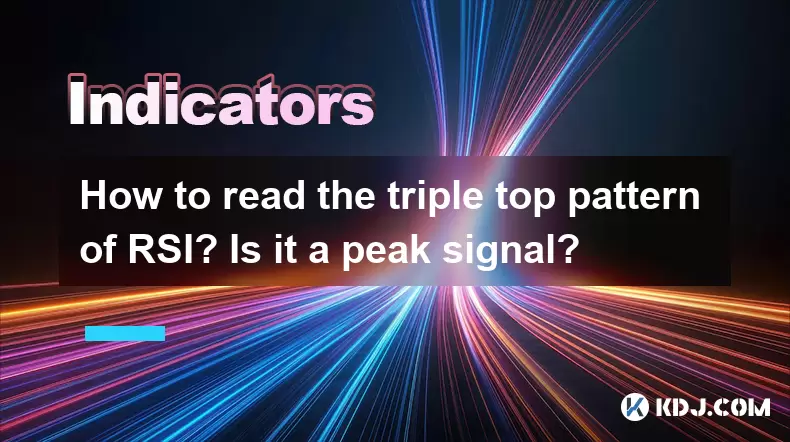
The Relative Strength Index (RSI) is a momentum oscillator that measures the speed and change of price movements. It is widely used by traders in the cryptocurrency market to identify overbought or oversold conditions. One of the more advanced patterns that traders look for in RSI is the triple top pattern. This pattern can signal potential reversals in the market, but interpreting it correctly requires a thorough understanding of its mechanics and implications.
What is the Triple Top Pattern in RSI?
The triple top pattern in RSI is identified when the RSI indicator reaches the same overbought level three times without breaking through to new highs. This pattern is considered significant because it suggests that the bullish momentum is weakening, as the asset fails to sustain higher prices despite multiple attempts. The standard overbought level for RSI is typically set at 70, but some traders may adjust this threshold based on the specific cryptocurrency and market conditions.
How to Identify a Triple Top Pattern in RSI
Identifying a triple top pattern in RSI involves several key steps:
- Monitor the RSI Indicator: Ensure that you have the RSI indicator enabled on your trading platform. The default setting for RSI is usually 14 periods, but you can adjust this based on your trading strategy.
- Watch for Overbought Levels: Pay close attention to when the RSI reaches the overbought level, typically around 70. A single instance of reaching this level is not enough to form a triple top.
- Observe Three Peaks: Look for the RSI to reach the same overbought level three times. Each peak should be relatively close in value, indicating that the asset is struggling to push higher.
- Confirm the Pattern: The triple top pattern is confirmed when the RSI fails to break above the previous highs on the third attempt and subsequently falls below the level of the valleys between the peaks.
Is the Triple Top Pattern a Peak Signal?
The triple top pattern in RSI is often considered a peak signal because it suggests that the current bullish trend may be exhausting its momentum. When the RSI forms a triple top and then breaks down, it can indicate that a bearish reversal is imminent. However, it is crucial to use this pattern in conjunction with other technical indicators and market analysis to increase the reliability of your trading decisions.
How to Trade the Triple Top Pattern in RSI
Trading based on the triple top pattern in RSI involves several strategic steps:
- Wait for Confirmation: Do not enter a trade based solely on the formation of the triple top. Wait for the RSI to break below the level of the valleys between the peaks to confirm the pattern.
- Set Entry Points: Once the pattern is confirmed, consider entering a short position. The ideal entry point is often just after the RSI breaks below the valleys, indicating a potential downward move.
- Determine Stop-Loss Levels: Place your stop-loss order just above the highest peak of the triple top. This will help limit your potential losses if the market unexpectedly reverses.
- Identify Profit Targets: Use other technical indicators, such as support levels or Fibonacci retracement levels, to set realistic profit targets. A common approach is to target the next significant support level.
Examples of Triple Top Patterns in Cryptocurrency Markets
To better understand how the triple top pattern works in real-world scenarios, let's look at a few examples from the cryptocurrency market:
- Bitcoin (BTC): In early 2021, Bitcoin's RSI formed a triple top around the 70 level. After the third peak, the RSI broke down, and Bitcoin experienced a significant correction from its all-time high.
- Ethereum (ETH): During a bullish run in late 2020, Ethereum's RSI showed a triple top pattern. The subsequent breakdown in RSI coincided with a sharp decline in ETH's price, providing a profitable shorting opportunity for traders who recognized the pattern.
Combining Triple Top Pattern with Other Indicators
While the triple top pattern can be a powerful tool, it is most effective when used in conjunction with other technical indicators. Here are some complementary indicators to consider:
- Moving Averages: Use moving averages to confirm the trend direction. If the price is below a key moving average when the RSI forms a triple top, it strengthens the bearish signal.
- MACD: The Moving Average Convergence Divergence (MACD) can help confirm momentum shifts. A bearish crossover in MACD around the same time as a triple top in RSI can reinforce the likelihood of a downward move.
- Volume: High trading volume during the breakdown of the triple top pattern can indicate stronger bearish sentiment and increase the reliability of the signal.
Potential Pitfalls and False Signals
While the triple top pattern can be a valuable tool, it is not infallible. Traders should be aware of potential pitfalls and false signals:
- False Breakouts: Sometimes, the RSI may break below the valleys between the peaks but then quickly recover. This can lead to false bearish signals and potential losses if traders enter short positions prematurely.
- Market Noise: In highly volatile markets, the RSI can produce multiple peaks that may resemble a triple top but are actually just noise. Always consider the broader market context and use multiple indicators to validate your analysis.
- Over-reliance on RSI: Relying solely on the RSI for trading decisions can be risky. Always combine RSI analysis with other forms of technical and fundamental analysis to make more informed trading choices.
Frequently Asked Questions
Q1: Can the triple top pattern occur in the RSI of any cryptocurrency?
Yes, the triple top pattern can occur in the RSI of any cryptocurrency. However, the reliability of the pattern may vary depending on the liquidity and volatility of the specific cryptocurrency. More liquid assets tend to produce more reliable signals.
Q2: How long does it typically take for a triple top pattern to form in RSI?
The formation time of a triple top pattern in RSI can vary widely. It depends on the timeframe you are using for your RSI calculations. On shorter timeframes, such as hourly charts, the pattern may form within days, while on daily charts, it could take weeks or even months.
Q3: Is the triple top pattern more reliable on certain RSI settings?
The reliability of the triple top pattern can be influenced by the RSI settings. The standard 14-period RSI is commonly used, but some traders find that adjusting the period to 9 or 21 can provide more or less sensitive signals. Experimenting with different settings can help you find what works best for your trading style.
Q4: Can the triple top pattern be used for long-term trading?
Yes, the triple top pattern can be used for long-term trading by applying it to higher timeframe charts, such as weekly or monthly charts. On these longer timeframes, the pattern can signal more significant and sustained trend reversals, making it suitable for long-term investment strategies.
Disclaimer:info@kdj.com
The information provided is not trading advice. kdj.com does not assume any responsibility for any investments made based on the information provided in this article. Cryptocurrencies are highly volatile and it is highly recommended that you invest with caution after thorough research!
If you believe that the content used on this website infringes your copyright, please contact us immediately (info@kdj.com) and we will delete it promptly.
- Litecoin Breakout Watch: What Traders Need to Know Now
- 2025-07-06 16:50:13
- Bitcoin, Solana, Ethereum: Decoding the Latest Buzz on the Blockchain
- 2025-07-06 16:50:13
- Widnes Resident's 50p Could Be Your Ticket to Easy Street: Rare Coin Mania!
- 2025-07-06 16:55:13
- Bitcoin, Solaris Presale, and Token Rewards: What's the Buzz?
- 2025-07-06 16:55:13
- Ethereum Under Pressure: Price Drop Amid Global Uncertainties
- 2025-07-06 17:00:13
- XRP, SEC Case, and Prosperity: A New Era for XRP Holders?
- 2025-07-06 17:10:13
Related knowledge
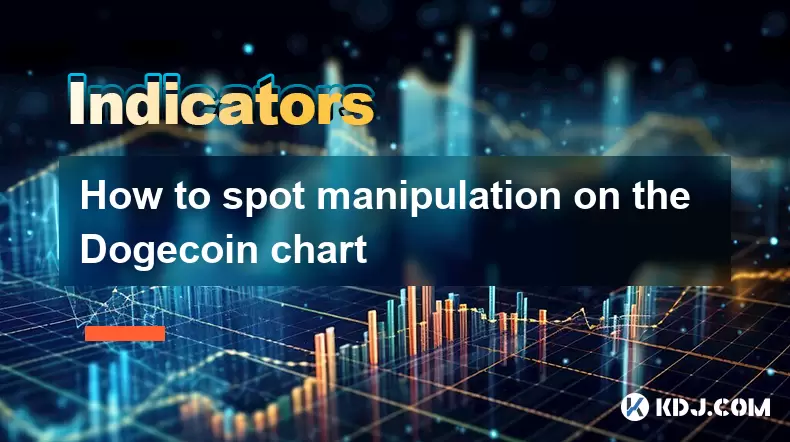
How to spot manipulation on the Dogecoin chart
Jul 06,2025 at 12:35pm
Understanding the Basics of Chart ManipulationChart manipulation in the cryptocurrency space, particularly with Dogecoin, refers to artificial price movements caused by coordinated trading activities rather than genuine market demand. These manipulations are often executed by large holders (commonly known as whales) or organized groups aiming to mislead...
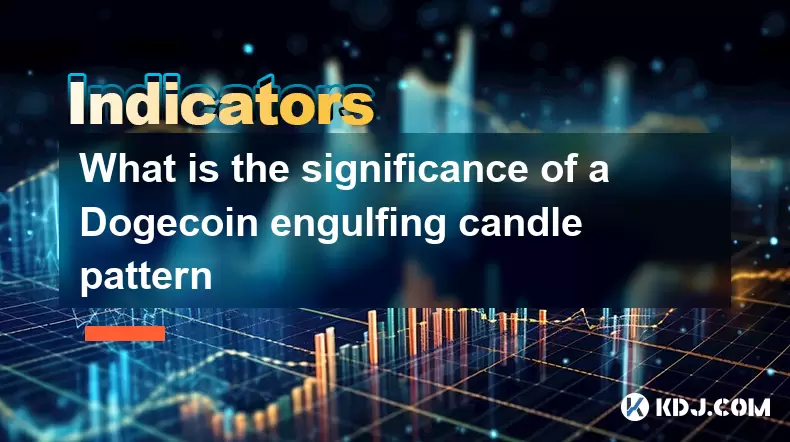
What is the significance of a Dogecoin engulfing candle pattern
Jul 06,2025 at 06:36am
Understanding the Engulfing Candle Pattern in CryptocurrencyThe engulfing candle pattern is a significant technical analysis tool used by traders to identify potential trend reversals in financial markets, including cryptocurrencies like Dogecoin. This pattern typically consists of two candles: the first one is relatively small and indicates the current...
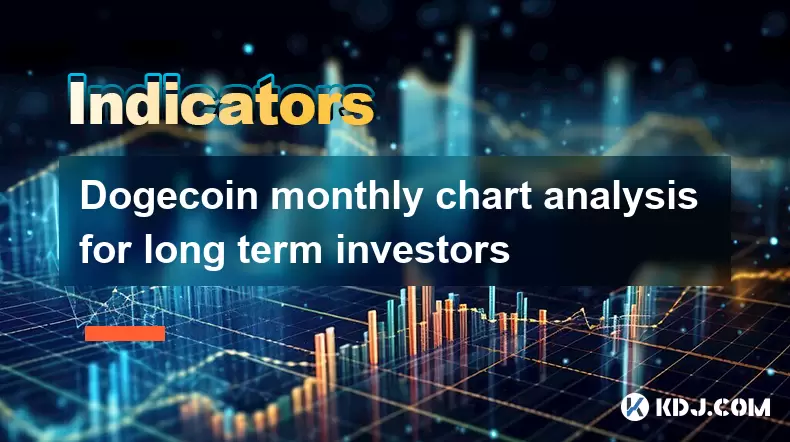
Dogecoin monthly chart analysis for long term investors
Jul 06,2025 at 10:08am
Understanding the Dogecoin Monthly ChartFor long-term investors, analyzing the monthly chart of Dogecoin (DOGE) provides a macro view of its price behavior over extended periods. The monthly chart captures major trends, key resistance and support levels, and potential reversal zones that are crucial for strategic investment planning. Unlike daily or hou...
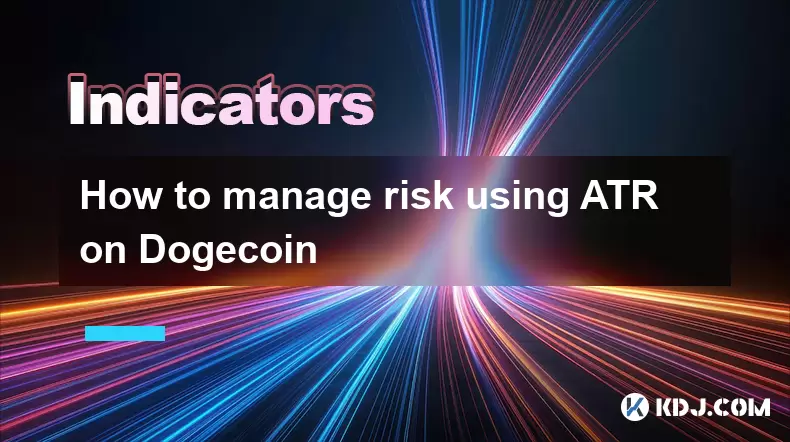
How to manage risk using ATR on Dogecoin
Jul 06,2025 at 02:35am
Understanding ATR in Cryptocurrency TradingThe Average True Range (ATR) is a technical indicator used to measure market volatility. Originally developed for commodities, it has found widespread use in cryptocurrency trading due to the high volatility inherent in digital assets like Dogecoin (DOGE). The ATR calculates the average range of price movement ...
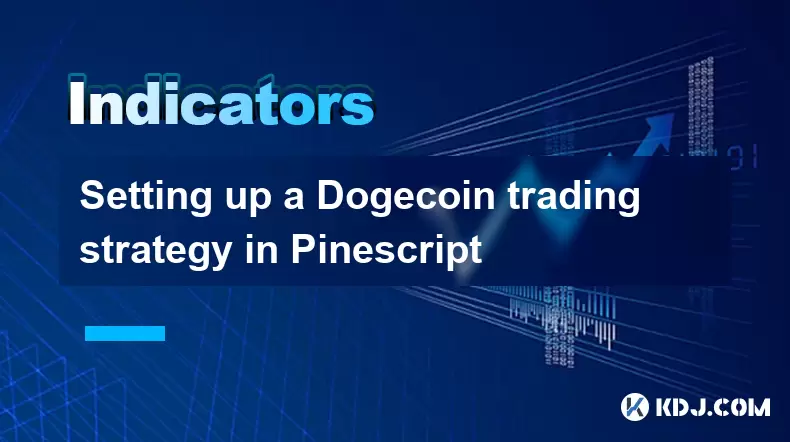
Setting up a Dogecoin trading strategy in Pinescript
Jul 06,2025 at 05:00pm
Understanding Dogecoin and Its Place in the Cryptocurrency MarketDogecoin (DOGE) is a decentralized, peer-to-peer cryptocurrency that was initially created as a joke but has since gained significant traction in the crypto market. Despite its humorous origins, Dogecoin has been adopted by a large community and supported by notable figures such as Elon Mu...
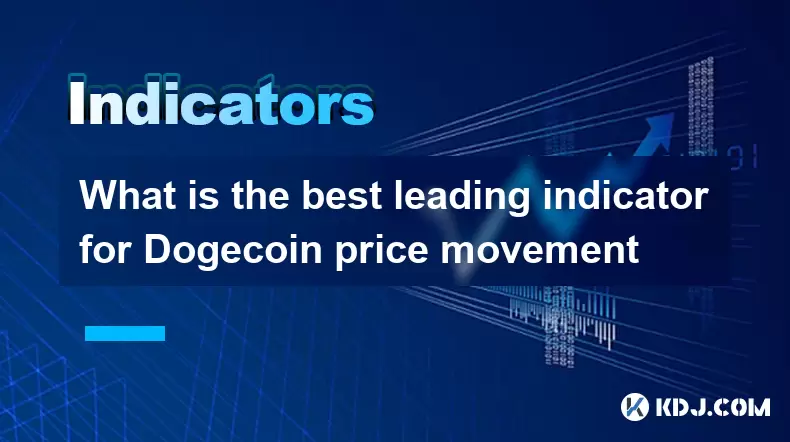
What is the best leading indicator for Dogecoin price movement
Jul 06,2025 at 06:00pm
Understanding Leading Indicators in CryptocurrencyIn the world of cryptocurrency trading, leading indicators play a crucial role in forecasting price movements before they occur. These tools are used by traders to anticipate potential market changes and make informed decisions. For Dogecoin (DOGE), which is known for its volatile nature and strong commu...

How to spot manipulation on the Dogecoin chart
Jul 06,2025 at 12:35pm
Understanding the Basics of Chart ManipulationChart manipulation in the cryptocurrency space, particularly with Dogecoin, refers to artificial price movements caused by coordinated trading activities rather than genuine market demand. These manipulations are often executed by large holders (commonly known as whales) or organized groups aiming to mislead...

What is the significance of a Dogecoin engulfing candle pattern
Jul 06,2025 at 06:36am
Understanding the Engulfing Candle Pattern in CryptocurrencyThe engulfing candle pattern is a significant technical analysis tool used by traders to identify potential trend reversals in financial markets, including cryptocurrencies like Dogecoin. This pattern typically consists of two candles: the first one is relatively small and indicates the current...

Dogecoin monthly chart analysis for long term investors
Jul 06,2025 at 10:08am
Understanding the Dogecoin Monthly ChartFor long-term investors, analyzing the monthly chart of Dogecoin (DOGE) provides a macro view of its price behavior over extended periods. The monthly chart captures major trends, key resistance and support levels, and potential reversal zones that are crucial for strategic investment planning. Unlike daily or hou...

How to manage risk using ATR on Dogecoin
Jul 06,2025 at 02:35am
Understanding ATR in Cryptocurrency TradingThe Average True Range (ATR) is a technical indicator used to measure market volatility. Originally developed for commodities, it has found widespread use in cryptocurrency trading due to the high volatility inherent in digital assets like Dogecoin (DOGE). The ATR calculates the average range of price movement ...

Setting up a Dogecoin trading strategy in Pinescript
Jul 06,2025 at 05:00pm
Understanding Dogecoin and Its Place in the Cryptocurrency MarketDogecoin (DOGE) is a decentralized, peer-to-peer cryptocurrency that was initially created as a joke but has since gained significant traction in the crypto market. Despite its humorous origins, Dogecoin has been adopted by a large community and supported by notable figures such as Elon Mu...

What is the best leading indicator for Dogecoin price movement
Jul 06,2025 at 06:00pm
Understanding Leading Indicators in CryptocurrencyIn the world of cryptocurrency trading, leading indicators play a crucial role in forecasting price movements before they occur. These tools are used by traders to anticipate potential market changes and make informed decisions. For Dogecoin (DOGE), which is known for its volatile nature and strong commu...
See all articles





















